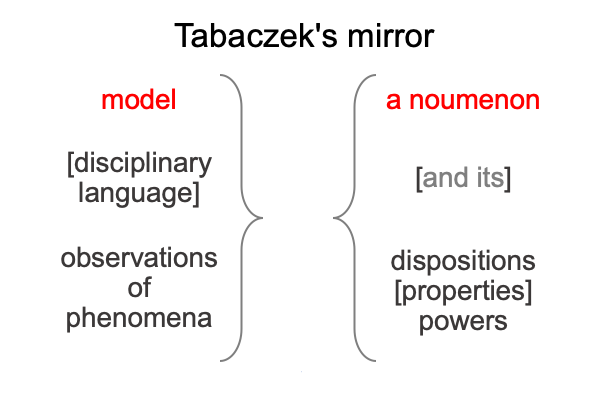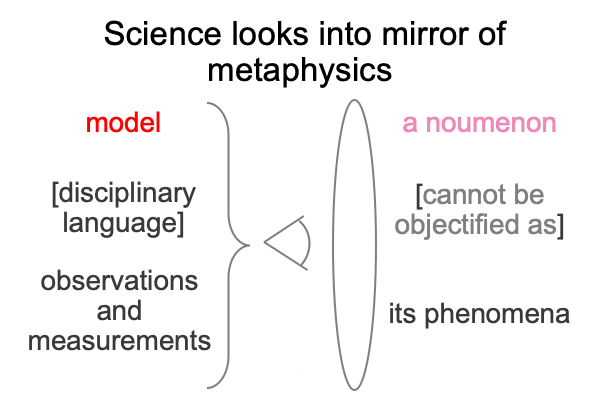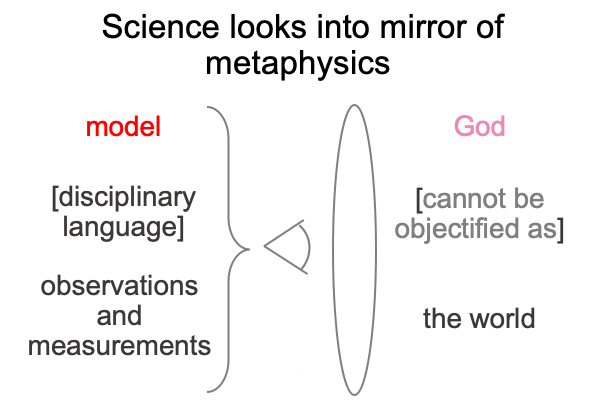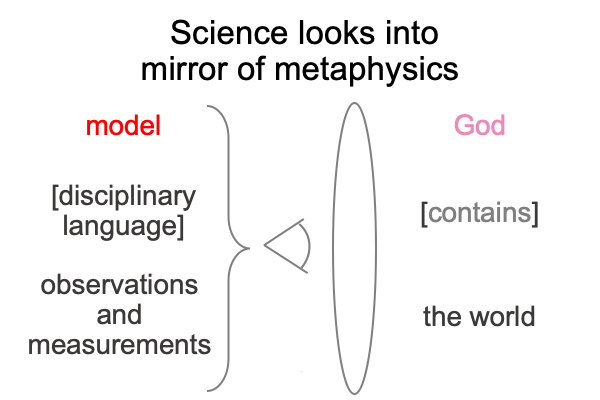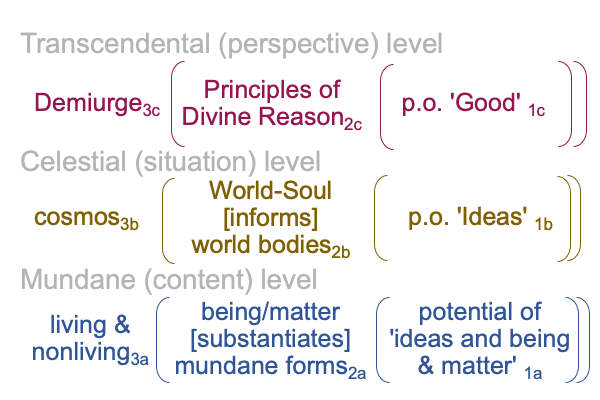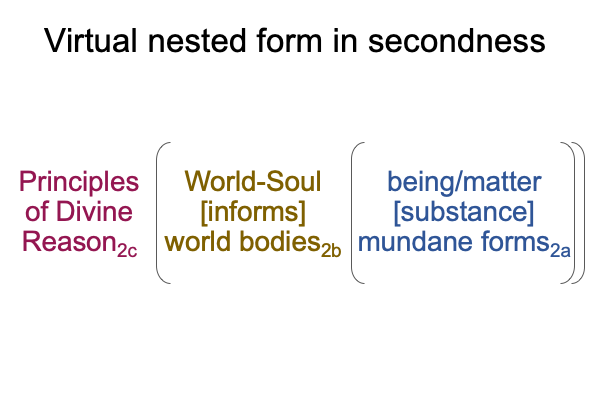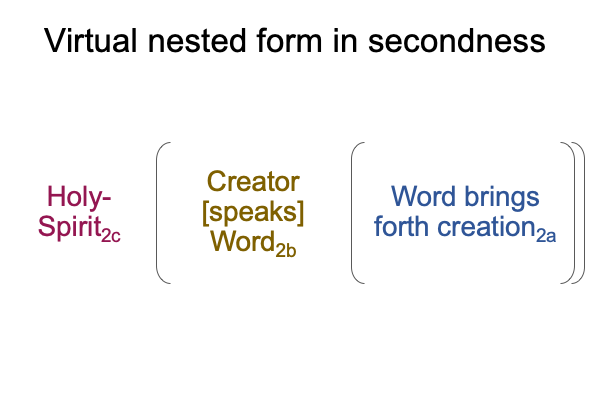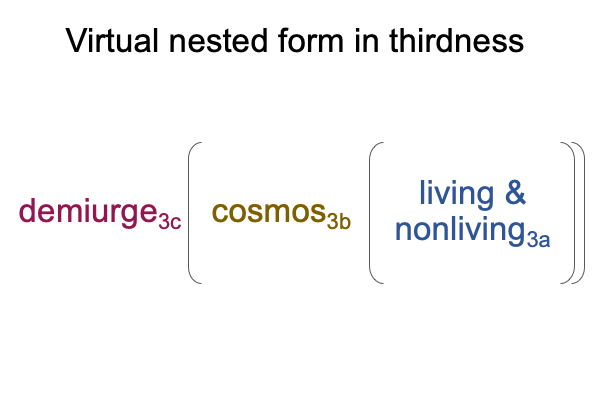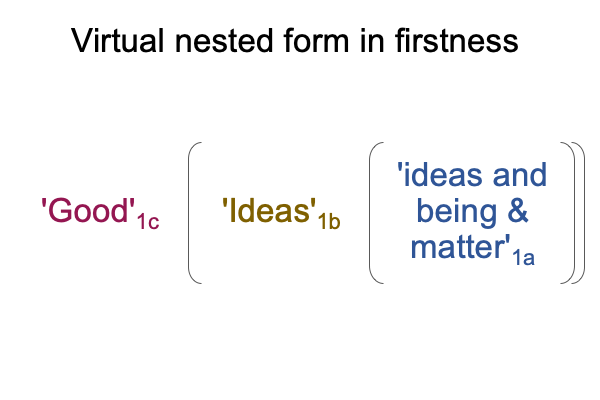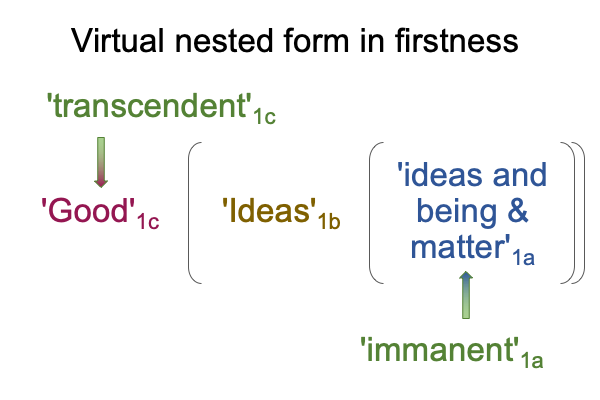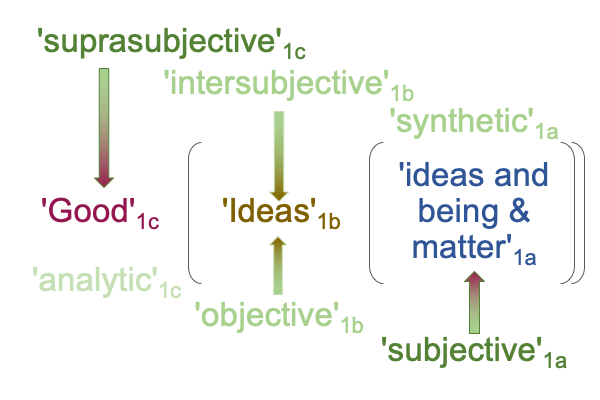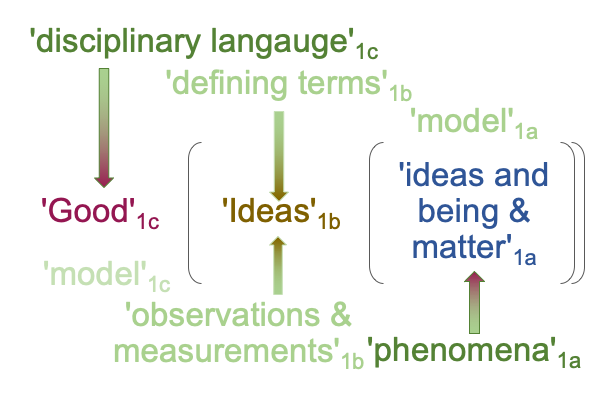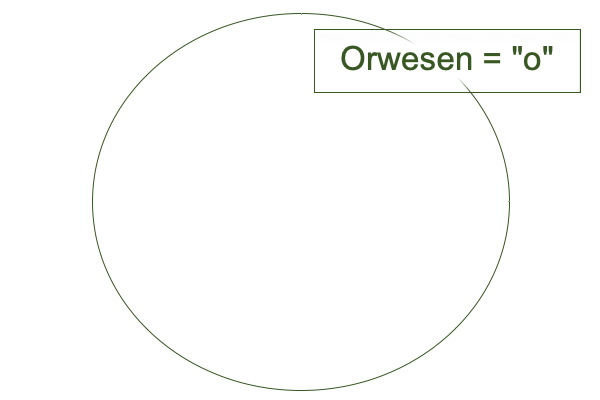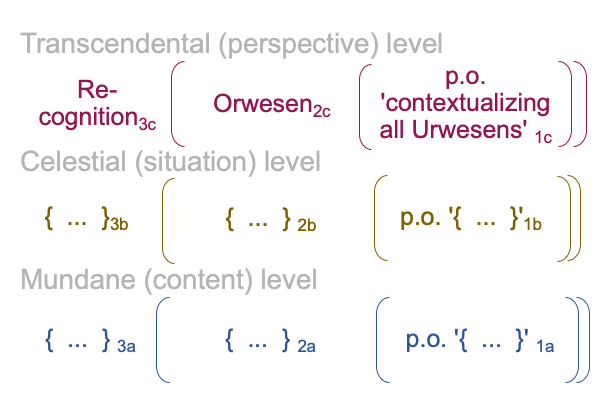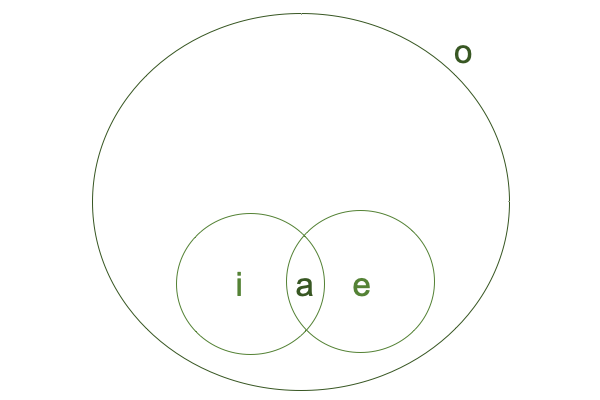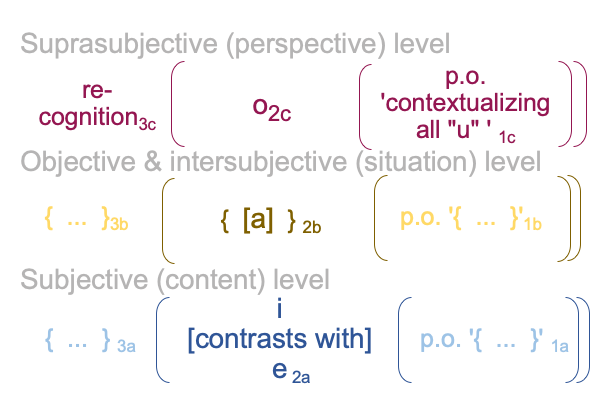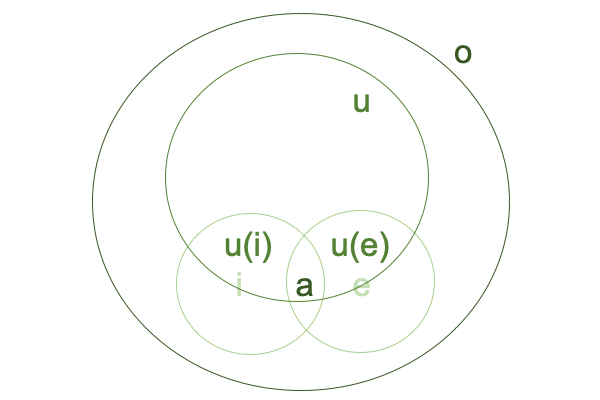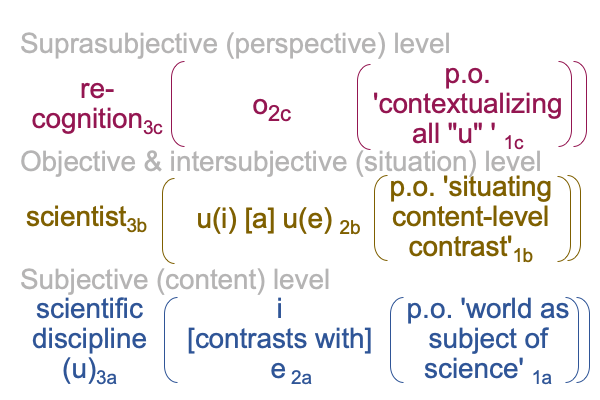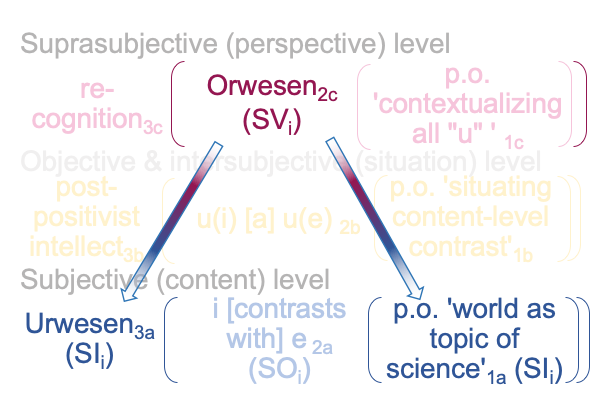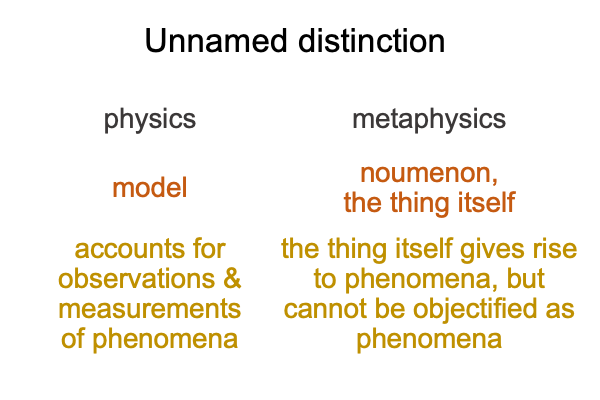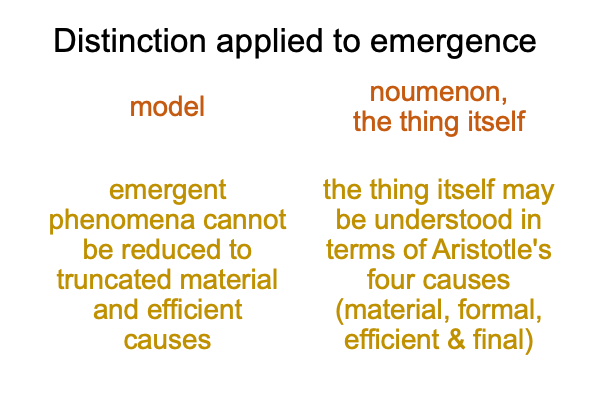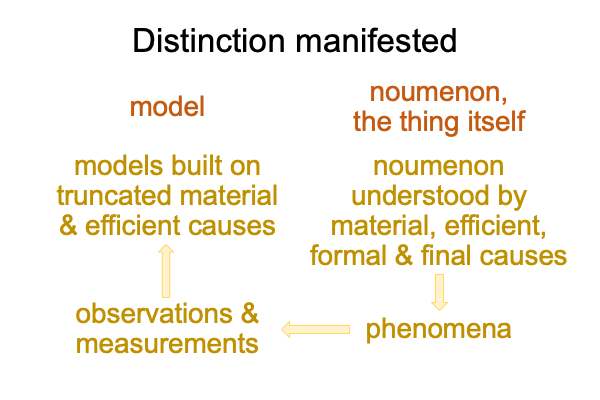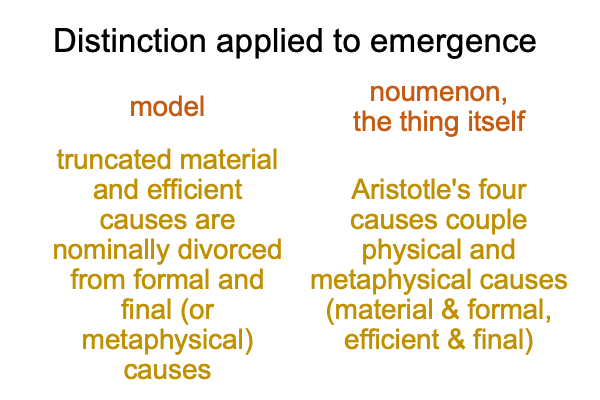Looking at Mariusz Tabaczek’s Book (2021) “Divine Action and Emergence” (Part 15 of 22)
0267 Of course, from this examiner’s point of view, Tabaczek’s persuasive impact would be radically improved if he realized that Peirce’s philosophy may be regarded as a postmodern branch of Thomism. Peirce offers a neo-Aristotelian terminology. Aristotle’s hylomorphe exemplifies Peirce’s category of secondness. Aristotle’s four causes integrate the category-based nested form. Category-based nested forms offer a way to portray emergence. As such, Aristotle’s causes are integral to describing the relationship between the thermodynamic, homeodynamic and morphodynamic levels in Deacon’s interscope.
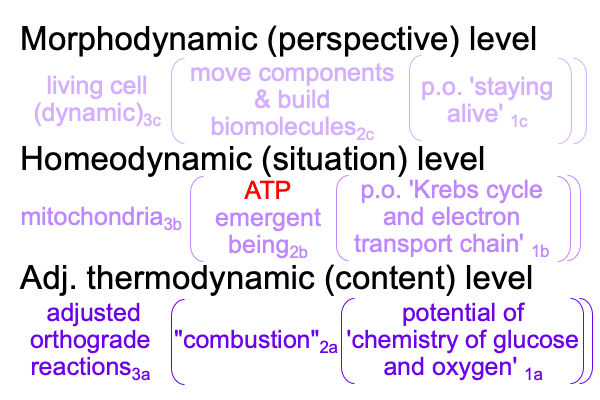
0268 The specific example of cellular respiration satisfies Deacon’s general account of emergence. The causality represented by the above interscope is described by Peirce’s concept of precission. Precission describes how one category emerges from and orders the adjacent lower category. Precission exhibits the logics of both “downward causation” and “dynamical depth”. The situation level virtually emerges from (and situates) the content level. The perspective level arises from (and contextualizes) the situation level.
0269 In terms of Aristotle’s causes, the situation level is what needs to be understood in material terms. Notably, in Deacon’s schema, the situation level adjusts the thermodynamic level.
At the same time, the virtual nested form in the category of secondness offers a different view of material causation for this emergent.
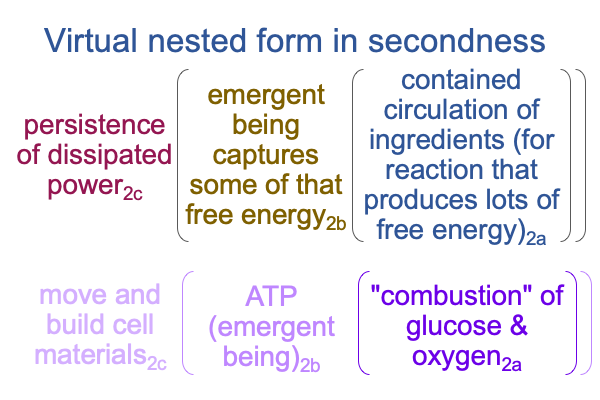
0270 The normal context of building biomolecules and moving cellular components2c virtually brings the actuality of the high-energy molecule ATP2b into relation with the potential of the mitochondria-facilitated Krebs cycle and electron transport chain2a (which is the way that mitochondria “burn” glucose and oxygen2a). The word, “combustion”2a becomes a metaphor for what mitochondria3b are really doing2b. They3b are containing and capturing some of the free energy2breleased by a spontaneous chemical reaction2a.
0271 Perspective-level formal causality fleshes out situation-level material causality. The perspective level virtually puts the situation level into context. The perspective level formalizes the situation level.
In particular, the actuality of ATP2b is a formal requirement for the potential of staying alive1b. ATP2b is the molecule of choice, because of its capacity to power proteins to move cellular components and to build biomolecules2c in the normal context of the living eukaryotic cell of a multicellular organism3c.
At the same time, the virtual nested form in the realm of thirdness (pictured below) formalizes the virtual nested form in the realm of secondness (pictured above).
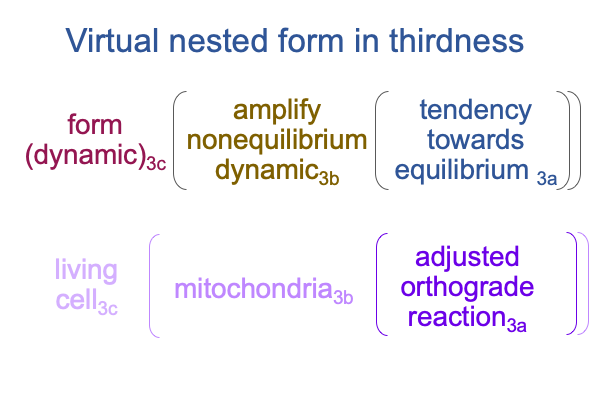
0272 Now, I present one long sentence.
The normal context of the living cell3c virtually bringing the actuality of mitochondria3b into relation with the potential of an adjusted orthograde reaction3a formalizes the normal context of moving cellular components and building biomolecules2c virtually bringing ATP2b into relation with the mitochondrial use of glucose and oxygen2a.
0273 In terms of Aristotle’s causes, the way that the situation level virtually emerges from (and situates) the content level dovetails into instrumental and efficient causalities. The question may be asked, “How do mitochondria3b work1b?” They3b work by exploiting a spontaneous chemical reaction3a that relies on the chemistry of glucose and oxygen1a. How they3b accomplish the task2a is solved by very clever laboratory work.
When thinking of efficient causality, must not ignore the virtual nested form in the category of firstness.
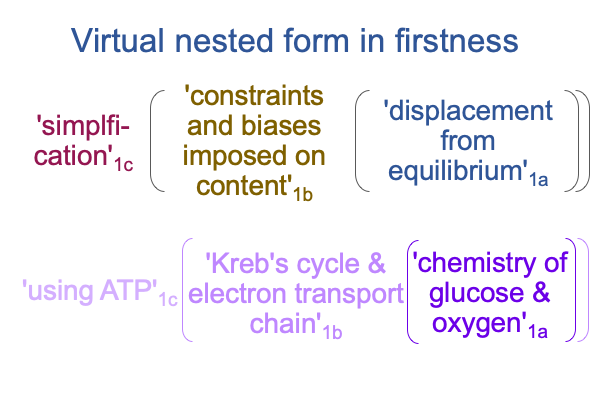
This virtual nested form is a launching point for the instrumental causalities that are inherent in the virtual nested form in secondness. The chemical dispositions of glucose and oxygen1a are exploited in the mitochondrial “combustion” of glucose and oxygen2a. The Krebs cycle and the electron transport chain1b produce ATP2b. ATP1c powers transport proteins and synthetic pathways2c.
0274 What is missing is the way that final causality complements these efficient causes.
Final causes are ignored in scientific research. Why? The positivist intellect does not permit metaphysics.
Formal causes are banned as well. But, I suspect that formal causes can slip in, as shadowy figures, under the umbrella of material causes.
Final causes have a little more difficulty infiltrating efficient causes. The above figure demonstrates why. It is not obvious how the virtual nested form in firstness implicates the virtual nested form in thirdness.
0275 Or is it?
To me, the term, “teleodynamic” is an appropriate label for the following juxtaposition.
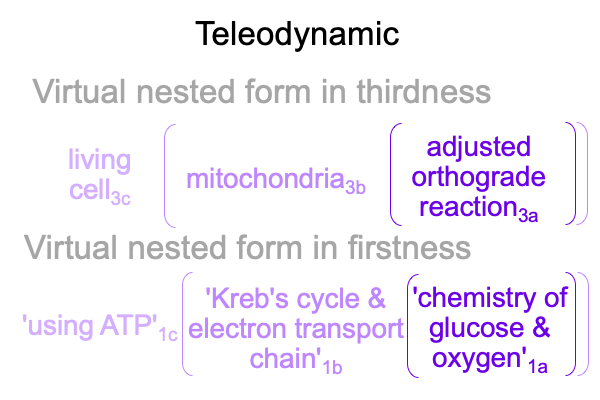
0276 While this application of Deacon’s formula for emergence does not cover all the bases in section 2.4, it demonstrates that Tabaczek, the metaphysician, is able to visualize an image in the mirror of science that roughly corresponds to what agents of science would be proud to own.

